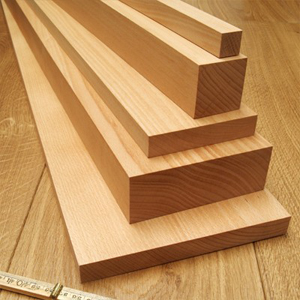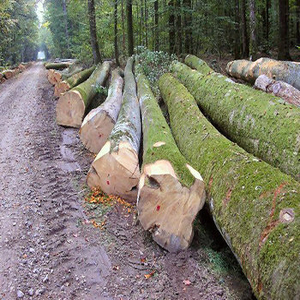

Common Name:
Preferred Common Name:: American White Oak
Other Names: European Beech
Distribution: A native of Western Europe, this species is reported to grow throughout Europe, approximately between latitudes 40 degrees North and 60 degrees North, and Western Asia.
General Description: European Beech wood is normally white, pale cream or pale brown and is steamed to relieve drying stresses while also bringing out a pinkish-red color.
Working Properties: Sawn
AGerman Beech is easy to machine, nails and glues well and when sanded, stained and polished, it produces an excellent smooth finish. The timber dries fairly well at a moderate rate, and requires care in air-seasoning and kilndrying to prevent excessive shrinkage.
Physical Properties: The wood is fairly hard and has a fine and even texture. German Beech has exceptional steam bending properties, even when knots and irregular grain are present. It can be bent to very small radii, which makes it particularly useful in the furniture industry. .
Durability: Strength properties of European Birch and African Mahogany are reported to be similar to those of German Beech.
Availability: The most available temperate hardwood in the world (see Figure 3); 57% of Germany's hardwood forests are German Beech. Available in wide boards and in the form of veneers, it is in the same price class as the lower cost hardwoods.
Main uses: Lightly steamed Beech is used in applications where clear finishes are utilized to highlight the natural beauty of the wood's grain and color uniformity. It is also used to mimic other more expensive woods such as Maple, Cherry, Mahogany and Walnut. Common uses include cabinetry, high-class joinery, furniture, chairs, desks, domestic flooring, sliced veneer and plywood. Beech is also used in musical instruments, toys, sports equipment, shoe heels, tool handles and wooden ware.
